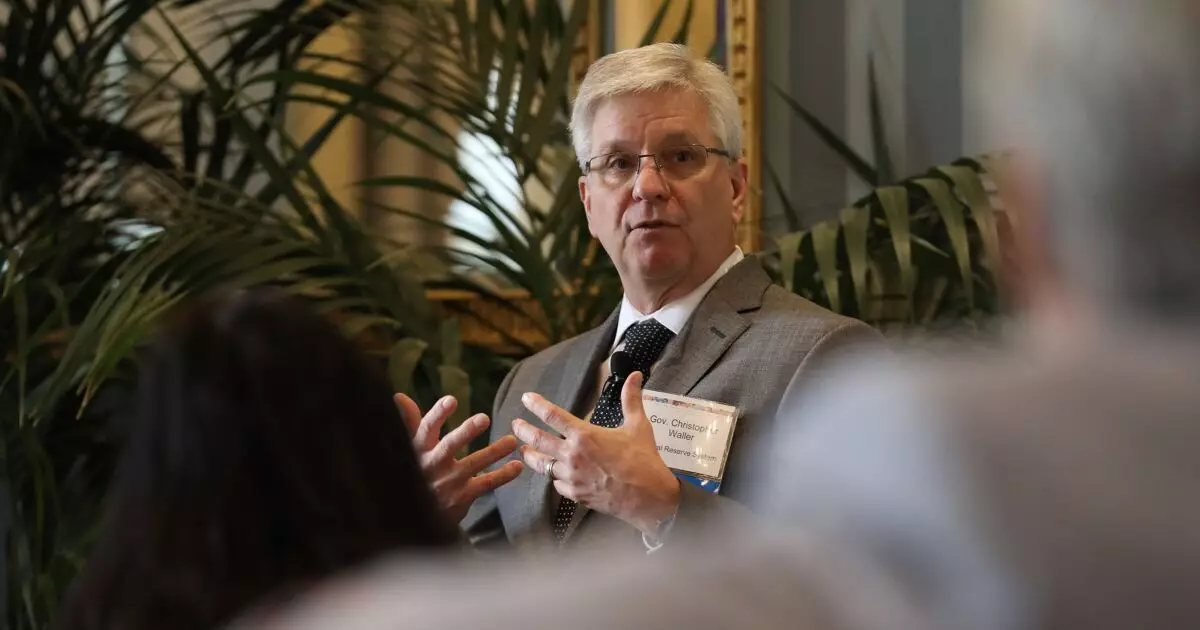As the year draws to a close, discussions around interest rates at the Federal Reserve are intensifying, particularly as Fed Governor Christopher Waller hints at the possibility of rate cuts in the coming months. In a recent address, Waller emphasized that reducing the federal funds rate by an additional 25 basis points may not compromise the Fed’s ongoing battle with inflation. However, the decision to cut rates hinges on a series of forthcoming economic data, which could sway the Committee’s outlook. This nuanced stance illustrates the Fed’s balancing act between fostering economic growth and maintaining price stability.
The dynamics of the labor market and inflationary trends will play a crucial role in shaping the Fed’s decision. Waller’s commentary underscores a vital point: while recent cuts have already lowered the policy rate by 0.75%, the trajectory of economic indicators is pivotal in determining whether additional easing is warranted sooner rather than later. The Fed’s cautious optimism regarding potential economic data highlights a broader concern—how current inflationary pressures, particularly in nonhousing core services, continue to outpace the desired target of 2%.
The Fed’s stringent focus on inflation is not without justification. As articulated by Waller, the persistence of core inflation, primarily driven by sectors such as nonhousing services, is particularly troubling. The current inflation rate rests at 2.8%, which, while a notable improvement from the spikes seen in previous years, still positions the Fed in a delicate situation. Waller acknowledges that even though inflation remains above target, the improvements over the past year reflect a shift in economic momentum.
It’s crucial to recognize that the Fed’s grasp on inflation feels analogous to a constant struggle. Waller’s metaphor about being an MMA fighter entrapped in a chokehold with inflation speaks volumes about the central bank’s ongoing challenges. Despite efforts to strip inflation of its grip, the complexities of the economic landscape mean that the fight is far from over.
The Fed’s approach to monetary policy must balance multiple goals: stimulating growth while ensuring that inflation does not spiral out of control. Waller’s insights argue that the current stance remains restrictive enough to avoid any drastic shifts from a rate cut. By framing the potential reduction in rates as a means to provide a cushion for sustained economic growth, the Fed appears to be laying the groundwork to gradually ease monetary policy without compromising long-term objectives.
Furthermore, the distinction between rates impacting bank margins and the overall lending landscape reflects the complexity of this policy shift. While lower interest rates can compress bank profit margins—a crucial indicator of financial health—they simultaneously enhance the lending environment, potentially invigorating various sectors of the economy. This duality illustrates the broader implications that interest rate changes carry, extending far beyond the banks themselves and permeating various facets of the economy.
Speculating on the timing of a rate cut, Waller’s remarks suggest that the FOMC’s next meeting will serve as a critical juncture. As the Fed awaits vital economic data—particularly employment figures due to be revealed shortly—the committee’s strategy appears to pivot on these insights. The notion that another rate cut could be contingent on the labor market’s performance underscores the intricate relationship between employment dynamics and inflation.
Essentially, the labor market’s fluctuating conditions, including significant disruptions caused by strikes and natural disasters, further complicate the Fed’s ability to evaluate its next move accurately. If upcoming labor data suggest sustained job growth or stabilization, the impetus for a rate cut may intensify. In contrast, disappointing figures could prompt the Fed to reconsider its strategy.
As the economic landscape continues to evolve, Waller’s reflections embody the uncertainty that characterizes current monetary policy discussions. The potential for interest rate adjustments remains contingent on an array of unpredictable factors, making it imperative for the Fed to exercise caution. By keenly monitoring inflationary trends and labor market conditions, the Federal Reserve aims to strike a delicate balance between stimulating growth and maintaining price stability. The coming weeks may yield critical insights that will ultimately define the trajectory of our economic future.

